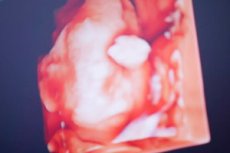
Some children with autism experience profound, lifelong difficulties, such as developmental delays, social problems and even an inability to speak. Others experience milder symptoms that improve over time.
This difference in outcomes has long been a mystery to scientists, but now a new study published in the journal Molecular Autism by researchers at the University of California, San Diego, sheds light on this question. Among his findings: the biological basis of these two subtypes of autism develops in the womb.
Researchers used stem cells taken from the blood of 10 children aged 1 to 4 years with idiopathic autism (for which no single-gene cause has been identified) to create brain cortical organoids (BCOs), models of the fetal cerebral cortex. They also created BCOs from six neurotypical kids.
The cerebral cortex, often called gray matter, lines the outer surface of the brain. It contains tens of billions of nerve cells and is responsible for important functions such as consciousness, thinking, reasoning, learning, memory, emotions and sensory functions.
Among their findings, the researchers found that the BCOs of toddlers with autism were significantly larger—about 40%—than those of neurotypical controls. This was confirmed by two rounds of studies conducted in different years (2021 and 2022). Each round involved the creation of hundreds of organoids from each patient.
Researchers also found that abnormal increases in BCO in children with autism correlated with how their condition manifested. The larger the baby's BCO size, the more severe his social and language symptoms were later, and the larger his brain structure was on MRI. Toddlers with excessively enlarged BCOs showed greater than normal volume in social, language, and sensory areas of the brain compared to neurotypical peers.
"Bigger is not always better when it comes to the brain," said Dr. Alisson Moutry, director of the Sanford Stem Cell Institute (SSCI) at the university. “We found that brain organoids from kids with profound autism have more cells and sometimes more neurons, and that’s not always a good thing.”
In addition, the BCOs of all children with autism, regardless of severity, grew approximately three times faster than those of neurotypical children. Some of the largest brain organoids—those from children with the most severe, persistent cases of autism—also showed accelerated neuron formation. The more severe a child's autism, the faster his BCO grew—sometimes to the point where he developed an excess number of neurons.
Eric Courchesne, a professor in the Department of Neurology at the School of Medicine and co-principal investigator of the study with Moutry, called the study "unique." Matching data on children with autism - including their IQ, symptom severity and MRI findings - with their corresponding BCO or similar stem cell-derived models is of great importance, he noted. But, oddly enough, such studies had not been carried out before their work.
"The core symptoms of autism are social-emotional and communication problems," said Courchesne, who is also co-director of the UC San Diego Center for Autism Excellence. "We need to understand the underlying neurobiological causes of these problems and when they begin to develop. We are the first to develop stem cell research in autism that addresses this specific and central question."

